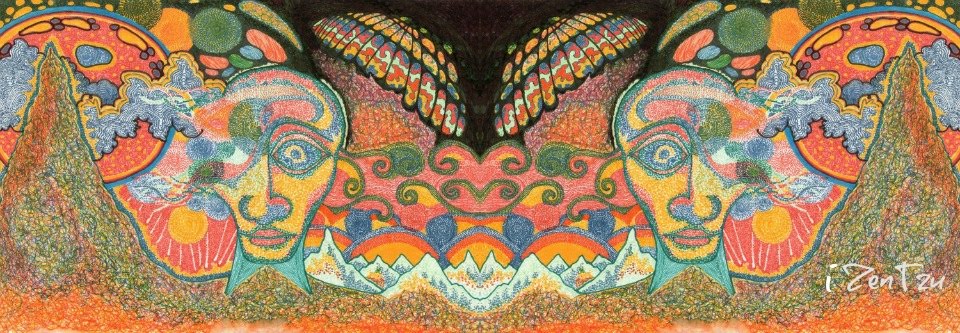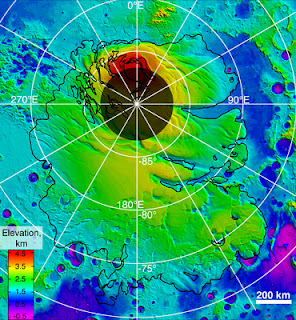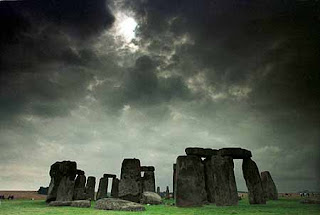Folklore or Prophecy?
According to South Indian lore, if you have a pongamia tree in your backyard and sit under it every day, you will receive the nourishment and vitality you need to overcome problems caused by extremes of wind, water, or fire. This bit of folklore may prove to be prophetic. The pongamia tree has the potential for transforming the struggling villages of today into tomorrow’s havens of prosperity and tranquility, and at the same time, restoring their rich heritage of rural self-sufficiency.
Drought, Biofuel, and Community Renewal - By Ishan Tigunait
With suicide rates among farmers in drought-stricken South India reaching epidemic proportions, a team of humanitarian organizations joined hands with entrepreneurs, scientists, bankers, and village leaders to restore the natural balance of rural life. The result? A creative plan to turn destitute farmers into the architects of a bright future for their communities. This plan, now well on its way to fruition, illustrates the potential for transformation when the seeds of hope are sown in human hearts.
For countless generations rural India ran on the jajmani system in which every family in a village was considered a “client” of all the others. Almost everything the community needed could be produced within the village, and essential goods and services were exchanged without the use of currency. The washermen, for example, collected and laundered the clothes of the entire village, and, in return, collected pots from the potters, rope from the ropemakers, and vegetables and grain from the farmers; the barbers cut their hair, and the tailors made their clothes.
This natural interdependence ensured that the basic necessities were available to everyone, and that nothing was wasted. The owner of a field harvested only what he needed, and when he declared himself finished with his harvest, the other villagers could come and take what remained. When the harvest was complete, anyone could turn their livestock out to graze in the fields. The same attitude applied to fruit trees. It was understood that only the landowner was entitled to pick the fruit, but anyone—even a passing stranger—was entitled to fruit that had fallen.
The jajmani system created a stable economy, for everyone understood that if any segment of the community struggled, everyone would suffer. As a result, social and economic interrelationships were carefully nurtured to maintain the health of the village and the land that supported it. And because farmers provided the nourishment needed to sustain life, they occupied a central role in this time-honored system.
As the plight of the villagers worsened throughout the 1990s, scientists from various disciplines began to look for new ways to foster sustainable rural development. A group at the Indian Institute of Sciences in Bangalore had been researching these strategies for more than thirty years. In the late 1990s they were searching for ways to bring electricity to run irrigation pumps to remote drought-stricken areas. One day, as they were discussing the possibilities with some villagers, their eyes fell on the large trees that formed hedges and boundary markers around the parched fields. Despite the persistent drought, the trees were flourishing.
 These were pongamia trees. Mature specimens of pongamia pinnata stand up to 50 feet high, and their dense canopy can be almost equally wide. They sport hearty, dark-green leaves that retain moisture even under intense heat. Small clusters of white, purple, and pink flowers blossom on their branches throughout the year, maturing into brown seed pods that litter the ground. The pods are so tough that even goats ignore them. Other than firewood, the only known use for the pongamia trees was to provide shade.
These were pongamia trees. Mature specimens of pongamia pinnata stand up to 50 feet high, and their dense canopy can be almost equally wide. They sport hearty, dark-green leaves that retain moisture even under intense heat. Small clusters of white, purple, and pink flowers blossom on their branches throughout the year, maturing into brown seed pods that litter the ground. The pods are so tough that even goats ignore them. Other than firewood, the only known use for the pongamia trees was to provide shade.
But as much as they appreciated the shade, it was the seeds that held the researchers’ attention. They knew that before the introduction of kerosene lanterns, pongamia seeds had been a source of lamp oil. This gave them an idea. Back in their laboratory, they found that with minimal refinement pongamia oil could also be used to fuel diesel engines.
This discovery addressed one of the most pressing needs of rural villages—the ever-growing demand for energy. Instead of importing petroleum diesel fuel to run their irrigation pumps and to power the generators that are the main source of electricity in remote areas, the villagers could switch to a locally available, affordable fuel. With further processing, pongamia seed oil can also be used to run heavy machinery and tractors—even to fuel cars and trucks.
Since the late 1990s, members of the Himalayan Institute’s South India Chapter had been concerned by the calamity facing the villagers. Under the leadership of Anil Reddy, the Institute had been working to provide basic medical and counseling services, as well as some small-scale employment opportunities in the form of organic farming projects in some villages. As helpful as these efforts were, it was clear that they were only short-term solutions. What the villagers really needed was a sustainable way to earn their living and a means of renewing their self-confidence and their traditional community bonds.
Searching for a way to bring this about, Reddy and his colleagues investigated dozens of rural development strategies. Pongamia was the most promising. For one thing, the tree is well suited to the intense heat and sunlight of South India. For another, its dense network of lateral roots and its thick, long taproot make it drought-resistant. The tree can even help rehabilitate the land—the dense shade it provides slows the evaporation of surface water and its root structures promote nitrogen fixation, which moves nutrients from the air into the soil. And once established, the pongamia can give a reliable harvest of seeds for fifty years.
After meeting with the researchers from the Indian Institute of Sciences and conducting additional research, Reddy knew he had found what he was looking for—a way to restore the self-reliance and economic self-sufficiency that had once been the hallmark of village life. Pongamia could form the basis of a self-sustaining agricultural platform that would breathe new life into the villages. Using pongamia oil to run irrigation pumps and generators would stem some of the outflow of village resources, but that was only the beginning.
In addition to biofuel, pongamia provides other resources vital to a farming community. The seedcake remaining after pressing the oil can be used as cattle feed; crops can be treated with organic pesticides from the seed pod; kitchen stoves can run on methane biogas made by fermenting the seed cake; and the waste pulp from the fermented seedcake can be used as an organic fertilizer (see sidebar). The potential was tremendous. And best of all, planting and cultivating the tree would require the labor of many villagers. Not only would this provide a steady income, but they would have to learn to rely on each other and share resources if the enterprise was to blossom. With millions of acres of farmland lying barren and unused, this tree could breathe new life into the villages of Andhra Pradesh.
———
After experimenting with a small pilot project to test the feasibility of the idea and to iron out the glitches, the Himalayan Institute launched its Biofuel Rural Development Initiative in 2003 in collaboration with two other organizations: Rahul Medical Society and Roshini Biotech. The ultimate goal of this project is to develop the full potential of the pongamia tree to bring about a widespread and lasting renewal throughout the region’s rural villages. But for this to happen, Reddy and his colleagues knew that they would first need to rekindle the villagers’ capacity for hope. Poverty and failure had so demoralized the farmers that they no longer believed in themselves. They needed to see there was an alternative to endless poverty, an alternative that would not just help them get by for another day or another week, but that would enable them, their families, and their community to build a healthy, more prosperous life. For this project to succeed on a grand scale, the impetus would have to come from the farmers themselves.
The Institute began by launching a massive public awareness and education campaign. It sent teams from village to village. They erected tents and provided cool lemon drinks and other refreshments; they listened to the villagers talk about their failing crops, the problems caused by the high-interest moneylenders, and their anxieties about the future. Then, team members offered a solution: grow pongamia trees as a crop. It was a radical idea—cultivating a common shade tree as a cash crop. But the team members assured the farmers that they had buyers for all the tough, brown seed pods these trees could produce.
The villagers were amazed to hear that they could grow pongamia on land they had considered useless. Rocky, hilly parcels were perfectly suitable for the tree. This allayed the farmers’ fears of gambling on an unknown crop—they realized they could cultivate pongamia on their marginal land while continuing to grow traditional crops on their most fertile acreage. And they were surprised to hear that the water required for four acres of crops such as rice or millet could support up to 150 acres of pongamia. Villagers also learned about crops that grow especially well in the vicinity of pongamia. For example, one of the more unusual characteristics of the tree is its capacity to attract and withstand insects that weaken and kill other plants. These pests restrict themselves to the pongamia and ignore more delicate plants, such as the cotton or groundnut. With the cooperation of the village councils, the word began to spread, and soon thousands were flocking to local meetings to learn about this promising new project.
The idea began to take hold, and when a significant number of farmers were ready to try it, the Institute set up workshops to teach the fundamental skills: how to irrigate and care for the seedlings during the crucial first few years, how to prune the growing trees, and how to graft the plants.
Grafting is necessary because it can take as long as ten years for a tree in the wild to reach full seed-bearing maturity. Even when it finally matures, there is no guarantee the tree will consistently produce a good harvest. If they were to grow pongamia successfully, the villagers needed simple, effective, and inexpensive ways to overcome these limitations.
In Roshini Biotech’s Hyderabad laboratory and on expansive test plots, researchers had developed standardized techniques for growing pongamia on a large scale. They found that to guarantee a consistently high yield, a stem, or scion, from a tree with a demonstrated capacity to produce many seeds had to be grafted onto an existing pongamia rootstock. So they studied thousands of pongamia variants, identifying and collecting the best sources of high-quality grafting stock. This not only removed the uncertainty from the yield, it also reduced the time to harvest from ten years to as little as three. In addition to scions from reliable trees, the villagers would need rootstocks for grafting, so Roshini Biotech established large nurseries to provide a steady supply.
———
Once the villagers had mastered the planting, grafting, and irrigation techniques, they were ready to begin. Roshini Biotech and the Himalayan Institute organized the villagers into groups and helped them qualify for low-interest loans so they could undertake the project. Roshini Biotech’s research nurseries supplied the seedlings and grafting materials. The company also served as the focal point for ensuring there is enough water available to irrigate the young trees. The federal government offered subsidy grants in the form of rice so the farmers and their families would not go hungry during the start-up phase. This was instrumental in persuading the farmers to commit acreage to the pongamia project because the rice subsidy amounted to approximately 300 kg per acre—more rice than can be grown on an acre of land in the region in a bad year.
As the farmers worked their fields, Reddy and his associates turned their attention to organizing and coordinating cooperative efforts. It is said that it takes a village to raise a child. It also takes a village to raise pongamia. Years of mistrust and hard times had strained the traditional bonds of fellowship that hold rural communities together. Now it was time to renew them.
Recognizing that the Himalayan Institute had made a long-term commitment to helping, the villagers joined hands to work as one to ensure their collective efforts would bear fruit. Starting with the village councils, cooperation at a grassroots level was established. Land that had once been fragmented into tiny plots and farmed by the individual owners was planted in pongamia and tended collectively. Farmers worked together to plant seedlings on land owned by the village and shared the responsibility for tending the young trees.
Another example of this newfound cooperation was the development of a community-based irrigation system. Villagers began to share the responsibility for collecting and distributing precious irrigation water. By overcoming their urge to grasp tightly to what little they had, and instead working together for the common good, the villagers took a huge step in restoring the trusting relationships which once defined their way of life.
What began in 2003 as a pilot project involving a few thousand families and 10,000 acres of pongamia trees has mushroomed. Today, more than 40,000 families are cultivating more than 100,000 acres of pongamia. Resilient green saplings are rising from dusty red fields, transforming the landscape around hundreds of villages. Yet, the fruit of this project goes far deeper than income generation and alternative energy, for it has touched the hearts of these villagers. For them, the pongamia tree is producing seeds of hope.
One Seed, Many Products
As people around the world are rediscovering, vegetable oils can be used to supplement or even replace traditional petroleum fuels. Though its raw oil can be used in stationary generators, pongamia oil, like all vegetable oils, needs additional processing known as transesterification to be used to power motorized vehicles. This involves heating unrefined oil and agitating it with a catalyst for a few hours to separate the pure vegetable oil from other constituents, such as glycerol. This transforms 90 percent of the dark-brown unrefined oil into a light-yellow liquid that can properly be called biodiesel. The glycerol in the remaining 10 percent has a wide range of applications, including use in cosmetics and pharmaceuticals. In fact, almost every step in the life cycle of pongamia seeds results in a safe and useful product.
Once the oil has been extracted from the seeds, the remaining seedcake can be mixed with water and placed in an airtight environment where it ferments, producing a flammable gas and a slurry, which is a safe and highly effective organic fertilizer. The gas can be compressed and stored in small tanks for use as cooking fuel. (Biogas burns far cleaner than wood or cow dung, the traditional cooking fuels, and so causes fewer respiratory disorders.) Widespread use of gas for cooking could also help curb the rampant deforestation common to areas where wood is used as a primary fuel.
The seedcake has other uses as well. The toxic compounds that make pongamia seeds repellent to grazing livestock can be extracted to create a potent natural pesticide. And once these toxins are removed, the seedcake makes a cattle feed that is rich in amino acids.
Transforming Ourselves and the World Around Us
The goal of spiritual practice is to seek the intrinsic divinity within ourselves and to experience its richness in every facet of our lives. It is this process of transformation—within and without—that is the heart of yoga.
The practice of yoga leads us to see the outer world as a reflection of the divinity within. And as we do, we see that the divinity shining in our own hearts shines in all living beings. When this realization dawns, we experience joy and fulfillment in serving others, and selfless service becomes an integral part of our spiritual practice. This is why all great spiritual organizations involve themselves in humanitarian work.
The Himalayan Institute, which publishes Yoga International magazine, serves as one the world’s leading centers for the study and practice of yoga. It has been undertaking humanitarian and charitable projects since it was founded more than thirty years ago. To help further this work, the Himalayan Institute launched Sacred Link—The Healing Revolution in 2001. Comprising a broad range of initiatives, Sacred Link is the culmination of the Institute’s efforts to bring the practice of self-transformation into action, both at the individual and collective level.
One of Sacred Link’s most exciting humanitarian projects is the Biofuel Rural Development Initiative launched in South India in 2003. It seeks to transform struggling rural communities into havens of health and happiness through a wide range of economic development and social renewal programs. Himalayan Institute Sacred Link
We cannot find global solutions to local problems. We have to find local solutions and apply these solutions locally. This simple truth applies to all communities throughout the world. When people value the local resources that allow them to survive and prosper, then people will also respect the resources that empower their lives.
According to South Indian lore, if you have a pongamia tree in your backyard and sit under it every day, you will receive the nourishment and vitality you need to overcome problems caused by extremes of wind, water, or fire. This bit of folklore may prove to be prophetic. The pongamia tree has the potential for transforming the struggling villages of today into tomorrow’s havens of prosperity and tranquility, and at the same time, restoring their rich heritage of rural self-sufficiency.
Drought, Biofuel, and Community Renewal - By Ishan Tigunait
With suicide rates among farmers in drought-stricken South India reaching epidemic proportions, a team of humanitarian organizations joined hands with entrepreneurs, scientists, bankers, and village leaders to restore the natural balance of rural life. The result? A creative plan to turn destitute farmers into the architects of a bright future for their communities. This plan, now well on its way to fruition, illustrates the potential for transformation when the seeds of hope are sown in human hearts.
For countless generations rural India ran on the jajmani system in which every family in a village was considered a “client” of all the others. Almost everything the community needed could be produced within the village, and essential goods and services were exchanged without the use of currency. The washermen, for example, collected and laundered the clothes of the entire village, and, in return, collected pots from the potters, rope from the ropemakers, and vegetables and grain from the farmers; the barbers cut their hair, and the tailors made their clothes.
This natural interdependence ensured that the basic necessities were available to everyone, and that nothing was wasted. The owner of a field harvested only what he needed, and when he declared himself finished with his harvest, the other villagers could come and take what remained. When the harvest was complete, anyone could turn their livestock out to graze in the fields. The same attitude applied to fruit trees. It was understood that only the landowner was entitled to pick the fruit, but anyone—even a passing stranger—was entitled to fruit that had fallen.
The jajmani system created a stable economy, for everyone understood that if any segment of the community struggled, everyone would suffer. As a result, social and economic interrelationships were carefully nurtured to maintain the health of the village and the land that supported it. And because farmers provided the nourishment needed to sustain life, they occupied a central role in this time-honored system.
As the plight of the villagers worsened throughout the 1990s, scientists from various disciplines began to look for new ways to foster sustainable rural development. A group at the Indian Institute of Sciences in Bangalore had been researching these strategies for more than thirty years. In the late 1990s they were searching for ways to bring electricity to run irrigation pumps to remote drought-stricken areas. One day, as they were discussing the possibilities with some villagers, their eyes fell on the large trees that formed hedges and boundary markers around the parched fields. Despite the persistent drought, the trees were flourishing.
 These were pongamia trees. Mature specimens of pongamia pinnata stand up to 50 feet high, and their dense canopy can be almost equally wide. They sport hearty, dark-green leaves that retain moisture even under intense heat. Small clusters of white, purple, and pink flowers blossom on their branches throughout the year, maturing into brown seed pods that litter the ground. The pods are so tough that even goats ignore them. Other than firewood, the only known use for the pongamia trees was to provide shade.
These were pongamia trees. Mature specimens of pongamia pinnata stand up to 50 feet high, and their dense canopy can be almost equally wide. They sport hearty, dark-green leaves that retain moisture even under intense heat. Small clusters of white, purple, and pink flowers blossom on their branches throughout the year, maturing into brown seed pods that litter the ground. The pods are so tough that even goats ignore them. Other than firewood, the only known use for the pongamia trees was to provide shade.But as much as they appreciated the shade, it was the seeds that held the researchers’ attention. They knew that before the introduction of kerosene lanterns, pongamia seeds had been a source of lamp oil. This gave them an idea. Back in their laboratory, they found that with minimal refinement pongamia oil could also be used to fuel diesel engines.
This discovery addressed one of the most pressing needs of rural villages—the ever-growing demand for energy. Instead of importing petroleum diesel fuel to run their irrigation pumps and to power the generators that are the main source of electricity in remote areas, the villagers could switch to a locally available, affordable fuel. With further processing, pongamia seed oil can also be used to run heavy machinery and tractors—even to fuel cars and trucks.
Since the late 1990s, members of the Himalayan Institute’s South India Chapter had been concerned by the calamity facing the villagers. Under the leadership of Anil Reddy, the Institute had been working to provide basic medical and counseling services, as well as some small-scale employment opportunities in the form of organic farming projects in some villages. As helpful as these efforts were, it was clear that they were only short-term solutions. What the villagers really needed was a sustainable way to earn their living and a means of renewing their self-confidence and their traditional community bonds.
Searching for a way to bring this about, Reddy and his colleagues investigated dozens of rural development strategies. Pongamia was the most promising. For one thing, the tree is well suited to the intense heat and sunlight of South India. For another, its dense network of lateral roots and its thick, long taproot make it drought-resistant. The tree can even help rehabilitate the land—the dense shade it provides slows the evaporation of surface water and its root structures promote nitrogen fixation, which moves nutrients from the air into the soil. And once established, the pongamia can give a reliable harvest of seeds for fifty years.
After meeting with the researchers from the Indian Institute of Sciences and conducting additional research, Reddy knew he had found what he was looking for—a way to restore the self-reliance and economic self-sufficiency that had once been the hallmark of village life. Pongamia could form the basis of a self-sustaining agricultural platform that would breathe new life into the villages. Using pongamia oil to run irrigation pumps and generators would stem some of the outflow of village resources, but that was only the beginning.
In addition to biofuel, pongamia provides other resources vital to a farming community. The seedcake remaining after pressing the oil can be used as cattle feed; crops can be treated with organic pesticides from the seed pod; kitchen stoves can run on methane biogas made by fermenting the seed cake; and the waste pulp from the fermented seedcake can be used as an organic fertilizer (see sidebar). The potential was tremendous. And best of all, planting and cultivating the tree would require the labor of many villagers. Not only would this provide a steady income, but they would have to learn to rely on each other and share resources if the enterprise was to blossom. With millions of acres of farmland lying barren and unused, this tree could breathe new life into the villages of Andhra Pradesh.
———
After experimenting with a small pilot project to test the feasibility of the idea and to iron out the glitches, the Himalayan Institute launched its Biofuel Rural Development Initiative in 2003 in collaboration with two other organizations: Rahul Medical Society and Roshini Biotech. The ultimate goal of this project is to develop the full potential of the pongamia tree to bring about a widespread and lasting renewal throughout the region’s rural villages. But for this to happen, Reddy and his colleagues knew that they would first need to rekindle the villagers’ capacity for hope. Poverty and failure had so demoralized the farmers that they no longer believed in themselves. They needed to see there was an alternative to endless poverty, an alternative that would not just help them get by for another day or another week, but that would enable them, their families, and their community to build a healthy, more prosperous life. For this project to succeed on a grand scale, the impetus would have to come from the farmers themselves.
The Institute began by launching a massive public awareness and education campaign. It sent teams from village to village. They erected tents and provided cool lemon drinks and other refreshments; they listened to the villagers talk about their failing crops, the problems caused by the high-interest moneylenders, and their anxieties about the future. Then, team members offered a solution: grow pongamia trees as a crop. It was a radical idea—cultivating a common shade tree as a cash crop. But the team members assured the farmers that they had buyers for all the tough, brown seed pods these trees could produce.
The villagers were amazed to hear that they could grow pongamia on land they had considered useless. Rocky, hilly parcels were perfectly suitable for the tree. This allayed the farmers’ fears of gambling on an unknown crop—they realized they could cultivate pongamia on their marginal land while continuing to grow traditional crops on their most fertile acreage. And they were surprised to hear that the water required for four acres of crops such as rice or millet could support up to 150 acres of pongamia. Villagers also learned about crops that grow especially well in the vicinity of pongamia. For example, one of the more unusual characteristics of the tree is its capacity to attract and withstand insects that weaken and kill other plants. These pests restrict themselves to the pongamia and ignore more delicate plants, such as the cotton or groundnut. With the cooperation of the village councils, the word began to spread, and soon thousands were flocking to local meetings to learn about this promising new project.
The idea began to take hold, and when a significant number of farmers were ready to try it, the Institute set up workshops to teach the fundamental skills: how to irrigate and care for the seedlings during the crucial first few years, how to prune the growing trees, and how to graft the plants.
Grafting is necessary because it can take as long as ten years for a tree in the wild to reach full seed-bearing maturity. Even when it finally matures, there is no guarantee the tree will consistently produce a good harvest. If they were to grow pongamia successfully, the villagers needed simple, effective, and inexpensive ways to overcome these limitations.
In Roshini Biotech’s Hyderabad laboratory and on expansive test plots, researchers had developed standardized techniques for growing pongamia on a large scale. They found that to guarantee a consistently high yield, a stem, or scion, from a tree with a demonstrated capacity to produce many seeds had to be grafted onto an existing pongamia rootstock. So they studied thousands of pongamia variants, identifying and collecting the best sources of high-quality grafting stock. This not only removed the uncertainty from the yield, it also reduced the time to harvest from ten years to as little as three. In addition to scions from reliable trees, the villagers would need rootstocks for grafting, so Roshini Biotech established large nurseries to provide a steady supply.
———
Once the villagers had mastered the planting, grafting, and irrigation techniques, they were ready to begin. Roshini Biotech and the Himalayan Institute organized the villagers into groups and helped them qualify for low-interest loans so they could undertake the project. Roshini Biotech’s research nurseries supplied the seedlings and grafting materials. The company also served as the focal point for ensuring there is enough water available to irrigate the young trees. The federal government offered subsidy grants in the form of rice so the farmers and their families would not go hungry during the start-up phase. This was instrumental in persuading the farmers to commit acreage to the pongamia project because the rice subsidy amounted to approximately 300 kg per acre—more rice than can be grown on an acre of land in the region in a bad year.
As the farmers worked their fields, Reddy and his associates turned their attention to organizing and coordinating cooperative efforts. It is said that it takes a village to raise a child. It also takes a village to raise pongamia. Years of mistrust and hard times had strained the traditional bonds of fellowship that hold rural communities together. Now it was time to renew them.
Recognizing that the Himalayan Institute had made a long-term commitment to helping, the villagers joined hands to work as one to ensure their collective efforts would bear fruit. Starting with the village councils, cooperation at a grassroots level was established. Land that had once been fragmented into tiny plots and farmed by the individual owners was planted in pongamia and tended collectively. Farmers worked together to plant seedlings on land owned by the village and shared the responsibility for tending the young trees.
Another example of this newfound cooperation was the development of a community-based irrigation system. Villagers began to share the responsibility for collecting and distributing precious irrigation water. By overcoming their urge to grasp tightly to what little they had, and instead working together for the common good, the villagers took a huge step in restoring the trusting relationships which once defined their way of life.
What began in 2003 as a pilot project involving a few thousand families and 10,000 acres of pongamia trees has mushroomed. Today, more than 40,000 families are cultivating more than 100,000 acres of pongamia. Resilient green saplings are rising from dusty red fields, transforming the landscape around hundreds of villages. Yet, the fruit of this project goes far deeper than income generation and alternative energy, for it has touched the hearts of these villagers. For them, the pongamia tree is producing seeds of hope.
One Seed, Many Products
As people around the world are rediscovering, vegetable oils can be used to supplement or even replace traditional petroleum fuels. Though its raw oil can be used in stationary generators, pongamia oil, like all vegetable oils, needs additional processing known as transesterification to be used to power motorized vehicles. This involves heating unrefined oil and agitating it with a catalyst for a few hours to separate the pure vegetable oil from other constituents, such as glycerol. This transforms 90 percent of the dark-brown unrefined oil into a light-yellow liquid that can properly be called biodiesel. The glycerol in the remaining 10 percent has a wide range of applications, including use in cosmetics and pharmaceuticals. In fact, almost every step in the life cycle of pongamia seeds results in a safe and useful product.
Once the oil has been extracted from the seeds, the remaining seedcake can be mixed with water and placed in an airtight environment where it ferments, producing a flammable gas and a slurry, which is a safe and highly effective organic fertilizer. The gas can be compressed and stored in small tanks for use as cooking fuel. (Biogas burns far cleaner than wood or cow dung, the traditional cooking fuels, and so causes fewer respiratory disorders.) Widespread use of gas for cooking could also help curb the rampant deforestation common to areas where wood is used as a primary fuel.
The seedcake has other uses as well. The toxic compounds that make pongamia seeds repellent to grazing livestock can be extracted to create a potent natural pesticide. And once these toxins are removed, the seedcake makes a cattle feed that is rich in amino acids.
Transforming Ourselves and the World Around Us
The goal of spiritual practice is to seek the intrinsic divinity within ourselves and to experience its richness in every facet of our lives. It is this process of transformation—within and without—that is the heart of yoga.
The practice of yoga leads us to see the outer world as a reflection of the divinity within. And as we do, we see that the divinity shining in our own hearts shines in all living beings. When this realization dawns, we experience joy and fulfillment in serving others, and selfless service becomes an integral part of our spiritual practice. This is why all great spiritual organizations involve themselves in humanitarian work.
The Himalayan Institute, which publishes Yoga International magazine, serves as one the world’s leading centers for the study and practice of yoga. It has been undertaking humanitarian and charitable projects since it was founded more than thirty years ago. To help further this work, the Himalayan Institute launched Sacred Link—The Healing Revolution in 2001. Comprising a broad range of initiatives, Sacred Link is the culmination of the Institute’s efforts to bring the practice of self-transformation into action, both at the individual and collective level.
One of Sacred Link’s most exciting humanitarian projects is the Biofuel Rural Development Initiative launched in South India in 2003. It seeks to transform struggling rural communities into havens of health and happiness through a wide range of economic development and social renewal programs. Himalayan Institute Sacred Link
We cannot find global solutions to local problems. We have to find local solutions and apply these solutions locally. This simple truth applies to all communities throughout the world. When people value the local resources that allow them to survive and prosper, then people will also respect the resources that empower their lives.















